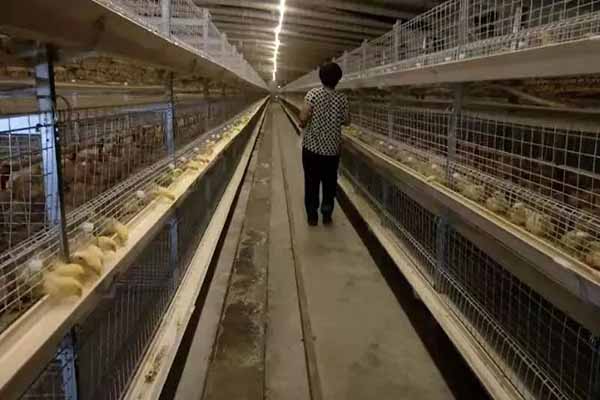The Return on Investment of Automated Equipment for Uganda Chicken Farms
Time : 2025-04-26
Are you a chicken farmer in Uganda looking to upgrade your operation? Considering the investment in automated equipment might just be the game-changer you need. In this article, we’ll dive into the return on investment (ROI) of automated equipment for Uganda chicken farms. We’ll explore the benefits, potential challenges, and how to make an informed decision that can skyrocket your farm’s profits.
Understanding the ROI of Automated Equipment
When you’re running a chicken farm, the idea of automating processes might seem daunting at first. However, the potential ROI can be substantial. Let’s break down what you can expect.
Cost Savings
One of the primary benefits of automated equipment is the reduction in labor costs. Manually handling tasks like feeding, watering, and collecting eggs can be time-consuming and expensive. With automated systems, these tasks can be done more efficiently and with less human intervention.
Increased Productivity
Automated equipment can handle tasks around the clock, which means your farm is always running at peak efficiency. This increase in productivity can lead to higher output, which in turn can lead to higher profits.
Improved Animal Welfare
By automating tasks like feeding and watering, you can ensure that all your chickens receive consistent and balanced nutrition. This can lead to healthier birds, which are more productive and have lower mortality rates.
Enhanced Data Collection
Modern automated systems are equipped with sensors and data collection capabilities. This means you can monitor your chickens’ health, behavior, and production metrics more effectively than ever before.
Calculating Your ROI
So, how do you calculate the ROI of automated equipment for your Uganda chicken farm? Here’s a basic outline:
1. Initial Investment Costs: This includes the purchase price of the equipment, installation costs, and any training required for your staff.
2. Operating Costs: Consider the ongoing costs of maintenance, repairs, and any additional energy consumption.
3. Revenue Increases: Estimate the increase in revenue you can expect due to higher productivity, lower mortality rates, and improved product quality.
4. Cost Savings: Calculate the savings on labor and other operational expenses due to the automation.
5. Time Savings: Quantify the time your staff will save by automating certain tasks.
Once you have these figures, you can use the following formula to calculate your ROI:
[ text{ROI} = left( frac{text{Revenue Increase} + text{Cost Savings}}{text{Initial Investment} + text{Operating Costs}} right) times 100 ]
Potential Challenges
While the potential benefits of automated equipment are significant, there are also challenges to consider:
– Initial Costs: The upfront cost of purchasing and installing automated systems can be high, which might not be feasible for smaller farms.
– Training: Your staff will need to be trained on how to use the new equipment, which can take time and resources.
– Reliability: You’ll want to ensure that the equipment is reliable and can withstand the harsh conditions of Uganda’s farming environment.
How to Make an Informed Decision
To make the best decision for your farm, consider the following steps:
1. Research: Look at different manufacturers and models of automated equipment. Consider their reputation, reliability, and customer reviews.
2. Budget: Assess your financial situation and determine how much you can afford to invest in automation.
3. Consult with Experts: Talk to other farmers who have already invested in automated equipment. They can provide valuable insights and advice.
4. Test the Equipment: If possible, test the equipment in your own environment to see how it performs under real conditions.
Case Studies
To give you a better idea of the ROI, let’s look at a few case studies:
– Case Study 1: A medium-sized chicken farm invested in automated feeding systems. Within the first year, they saw a 15% increase in production and a reduction in labor costs by 20%.
– Case Study 2: A large-scale chicken farm installed automated egg collection systems. They reported a 25% decrease in egg loss and a 10% increase in egg quality.
Conclusion
Investing in automated equipment for your Uganda chicken farm can be a game-changer. While there are challenges to consider, the potential benefits, such as cost savings, increased productivity, and improved animal welfare, can be substantial. By doing your research, budgeting wisely, and seeking expert advice, you can make an informed decision that could boost your farm’s profits.
Tags












